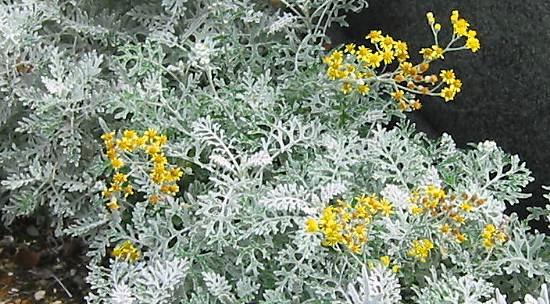
Zilverkruiskruid - Silver ragwort / Dusty miller
Jacobaea maritima (syn. Senecio cineraria; Senecio maritima; Cineraria maritima) (Compositae)
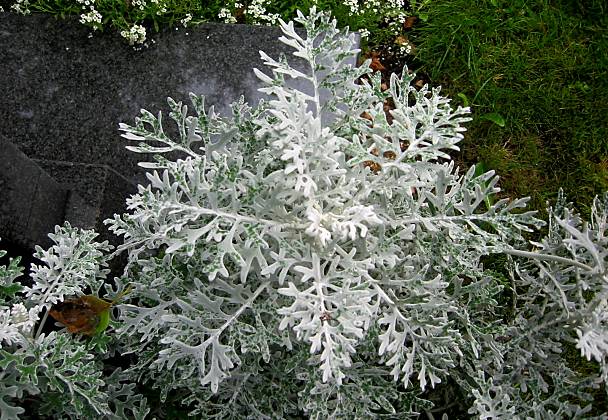
|
Zilverkruiskruid is een min of meer mediterrane soort die aan zee groeit, op rotsige stranden e.d.; veel planten aan zee zijn wit-viltig, om ze te beschermen
tegen de uitdrogende zoute zeewind. Omdat het blad van deze soort zo mooi is, heeft men er eenjarige sierplanten van gekweekt, meestal enigszins veredeld voor een compactere groei
of mooier blad dan de wilde plant. Het is onwaarschijnlijk dat dit kruiskruid zich in gevaarlijke hoeveelheden verspreidt in Nederland, maar toch schijnt het aan sommige dijken
tussen de stenen te groeien, waarschijnlijk vooral in het zuid(west)en. Het klimaat is met name bij ons in het noorden wat te koud. Deze plant heeft net als Jakobskruiskruid bij de nieuwste indeling van het plantenrijk (Heukels Flora, 23ste druk, 2005) de geslachtsnaam Jacobaea gekregen, vanwege de nauwe genetische verwantschap met deze plant. De kruiskruiden zijn nu opgesplitst in drie geslachten, het aloude Senecio en het nieuwe Jacobaea dat eerst alleen de soortnaam van Jakobskruiskruid was, en Tephroseris met één enkele plant (moerasandijvie). |
Silver ragwort or Dusty miller is a more or less mediterranean ragwort, growing by the sea on rocky beaches and the like; a lot of plants on the seaside are white-felty to protect
them against the dry salt seawinds. Because the foliage of this species is so attractive, the plant is grown as an ornamental annual, mostly improved for a more compact growth and even more
beautiful leaves. It's not likely this plant will spread to dangerous proportions in our climate, it's too cold, at least with us in the north. Its seems to grow on stony dikes here and there, though,
probably in the south(west) of the Netherlands. The new classification of the plant genera at the end of 2005 has resulted in two instead of one genus in the Ragwort family, the old Senecio and the new Jacobaea, which used to be the species name of only Common Ragwort. Now Silver Ragwort also belongs to the genus Jacobaea because of its close genetic relationship with Common ragwort. |
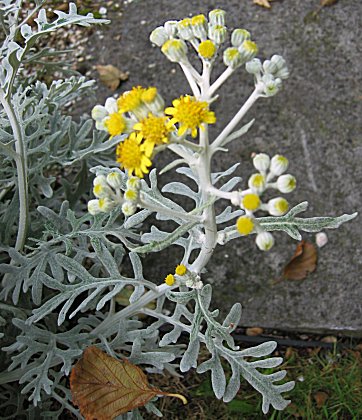

Typische kruiskruidbloemen, nog vrij klein ook, de sierwaarde zit echt in het blad
Typical ragwort flowers, and rather small - the real ornamental quality is in the foliage
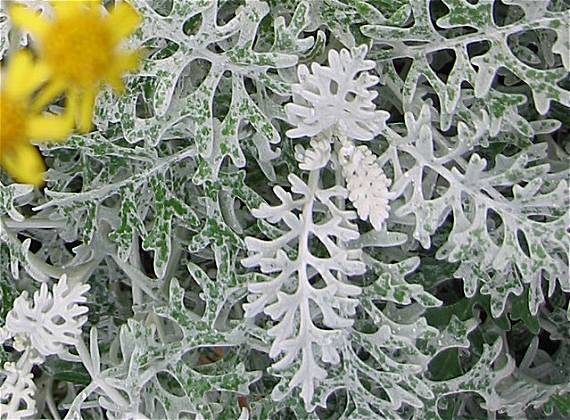
Hoe jonger het blad, hoe witter. Het oude blad vertoont donkere vlekken
The younger the leaf, the whiter. The older leaves show dark spots
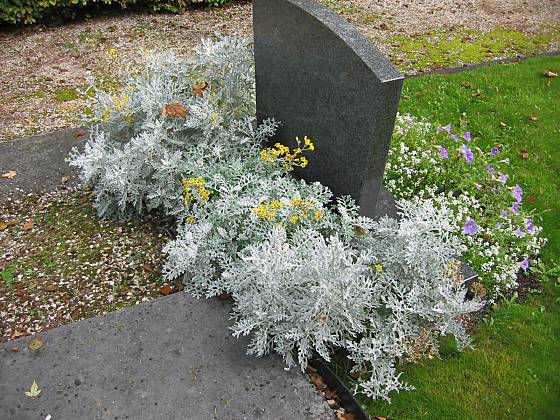
Hier vond ik dit zilverkruiskruid: als sierplantjes bij een graf
These silver ragwort plants had been placed at a gravestone for decoration
Kruiskruiden-pagina / Ragwort page
Alarmerende krantenartikelen uit 2004 en 2005

